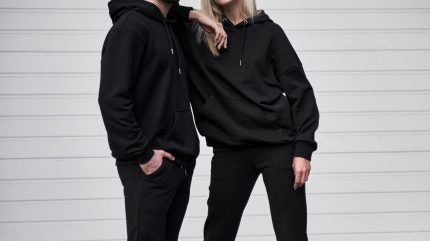How fashion brands can capture growth in a slowing sportswear market

25-3-2025
HOW FASHION BRANDS CAN CAPTURE GROWTH IN A SLOWING SPORTSWEAR MARKET
Sportswear will continue to grow through to 2028 but its growth will be more muted, according to the latest research from GlobalData.
Sportswear experienced its boom moment around the time of the pandemic where more people were at home and looking for comfortable clothing but also took more of an interest in their health and wellbeing.
Over the next few years it will continue to outperform fashion. However, its growth will be more muted out to 2028 as it reaches maturation in Western markets.
Between 2018 to 2023, sportswear grew at a CAGR of 6.6% to $422.1bn according to data from GlobalData which forecasts that from 2023-2028, it will grow at a CAGR of 3.5% to $502.1bn.
In 2023, the slowdown was due to inflationary pressures as well as increased demand for dressier styles and in 2024 it came under more of a challenge with just 2.2% growth in USD as economic challenges escalated, with China’s retail market also struggling due to the real estate crisis.
Growth is expected to pick up in 2025 to 5.1% as inflation eases in most markets and consumer confidence improves. Interest in health and fitness will continue to grow, and the athleisure trend will develop further, especially in emerging markets. Out to 2028, market growth is anticipated to gradually soften to 2.9%, as it becomes more established.
Is there still room for growth in the sportswear market?
Absolutely. But it is a sector that will remain challenged and calls for thinking outside of the box to be successful.
Among the biggest inhibitors will be:
Economic trouble: The sportswear market is not immune to the broader slowdown in spend on apparel, as inflation and economic pressures force consumers to cut back on discretionary purchases. Many major brands like Nike and Puma are facing significant setbacks in 2024, and consumer confidence will take some time to recover. Despite sportswear outpacing the total apparel market in the forecast period, economic uncertainty and lower disposable income will limit growth, making it challenging for brands to maintain premium pricing and invest in innovation.
Market maturation: Sportswear has experienced rapid growth over the last few years, and as the sector matures, its growth prospects will become more limited. This is especially the case in developed Western markets where the athleisure trend is now established. The strongest growth potential will instead come from emerging markets in Eastern Europe, the Middle East, South East Asia and Latin America, where the trend is still developing, alongside their growing economies. Brands will therefore have to work harder in the West to find new revenue streams, through tapping into rising sports, new categories and offering more exciting designs.
Threat from resale: Consumers are increasingly gravitating towards the resale market due to its affordability and environmental credentials. While many originally were resistant about buying sports clothing secondhand due to hygiene concerns, these are starting to ease as shoppers gain more confidence in the quality of resale items, which poses a threat to the traditional retail market. Sneaker resale sites such as StockX also continue to grow, which are especially popular for finding sold out or limited edition styles. As a result of this threat, brands such as New Balance and On have launched their own secondhand propositions to avoid spend transferring to platforms like Vinted and Depop.
Where are the pockets of growth?
Emerging markets: Expansion into emerging markets presents a strategic opportunity for sportswear brands, as they can capitalise on growing purchasing power, favourable demographics, and the rising awareness of health and fitness, especially as the athleisure trend matures within Western countries. However, brands should ensure when they enter new countries that they consider local market dynamics, cultural nuances and the competitive landscape.
Innovative designs: Innovative designs have become imperative for sportswear brands to remain relevant and inspire purchases, with market leader Nike admitting its recent struggles came from a lapse in innovation. Brands must constantly be on the lookout for new performance technologies to boost their technical credentials, while also incorporating fashion trends within their designs to remain relevant and create excitement.
Emergence of new sports: As the sportswear market matures, tracking the potential of new and emerging sports will be crucial for brands to widen their appeal and remain competitive. Padel and pickleball have recently blown up in popularity, alongside an increase in uptake of established sports like trekking and bouldering. Brands should act fast on these opportunities through dedicated product ranges and marketing campaigns to encourage new purchases.
Omnichannel: Though the online channel is still set to outperform in the forecast years, growth will slow down as it becomes more established, so blended omnichannel models will be the route to success. Sportswear brands should utilise their store presence to boost customer engagement through interactive events and digital features, while also building seamless and innovative online platforms using technologies such as AI.
By Just Style
Copyright © 2021 Powered By AEC Egypt
